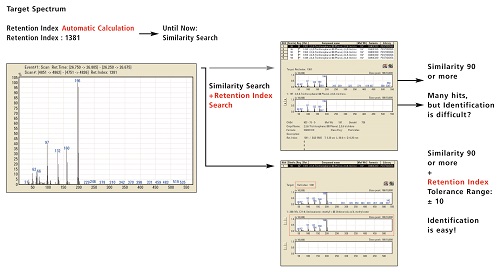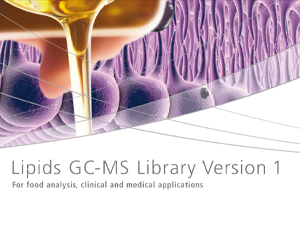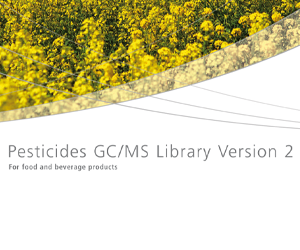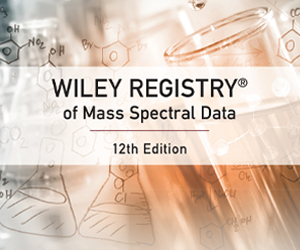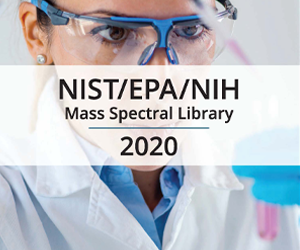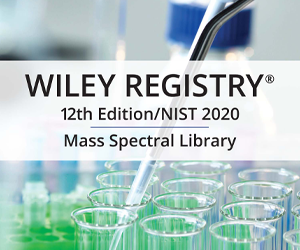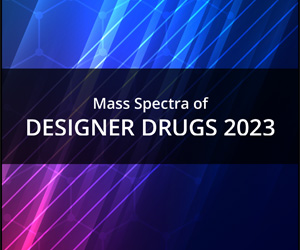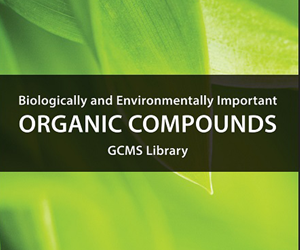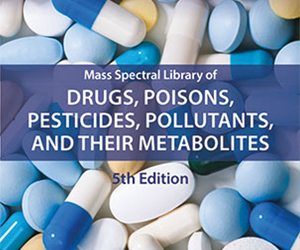GCMS Mass Spectral Library
Shimadzu Provides Various MS Spectral Libraries to Help You Identify Compounds Smoothly
Linear Retention Indices (LRI) for better compound identification
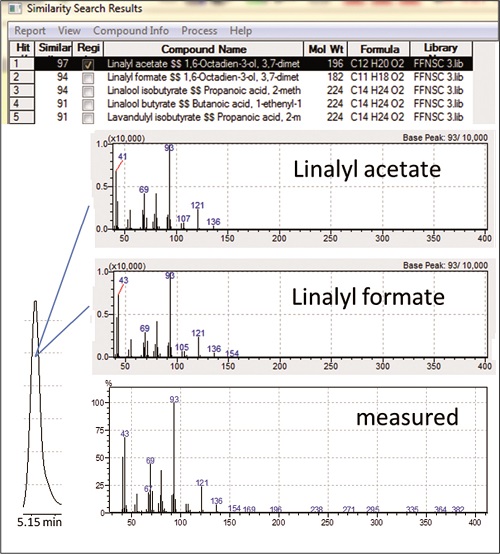
Untargeted GCMS analysis relies completely on the possibility to identify measured compounds based on library spectra for comparison. Even targeted analysis can benefit highly from additional scan infor - mation, decreasing false positive results due to matrix or component interference. Therefore, independent of the application field, the reliability of this identification process is a key factor for routine analysts.
Particularly difficult are co-elution cases, which are of growing importance due to the ubiquitous increase of target components to be monitored, often accompanied by the need for higher sample throughput while reducing analysis times. Even more challenging are applications which involve compounds with very similar electron impact spectra. Unique identification is difficult as long as the spectral comparison is not considered.
LRI significantly improves identification reliability
Shimadzu applies the well-known linear retention indices (LRI) as an additional filter during library search. Instead of spending valuable time in manual post-processing, retention index information improves automatized identification reliability.
Isomers are difficult to assign reliably using only library spectra, as aside from possible false positive results their spectra are nearly identical. In these cases, the use of linear retention indices (LRI) as additional criteria improves identification reliability significantly and reduces manual post-processing. The example below shows the assignment of 2,3,6-Trichlorophenol to the measured scan spectrum on the left. The possible different isomers can only be distinguished based on their corresponding linear retention index (LRI) included in the library information. By filtering via retention index allowance during the library search the correct isomer is obtained directly in a single hit.
